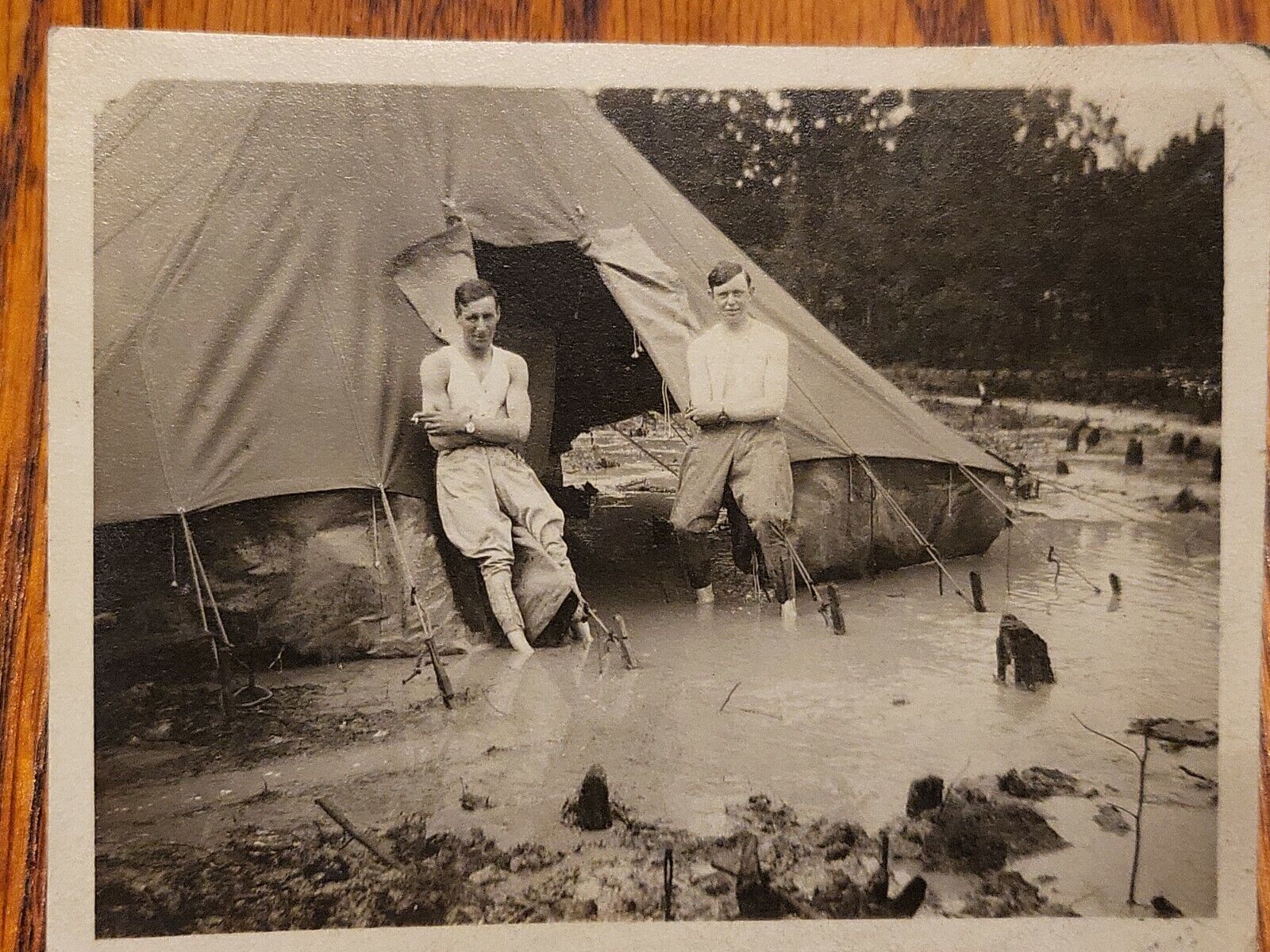-40%
Original WWI Photo Flooded Quarter Master Tent Camp McClellan Alabama US Army
$ 10.56
- Description
- Size Guide
Description
Original WWI Photograph of QM Quarter Masters Tent Flooded Camp McClellan Alabama US Army Soldiers 29th Infantry DivisionHandwritten note on back of photo
'The Q.M. tent after a light rain second street before it was properly drained'
As I research these photos of Camp McClellan, I have deduced that the soldier to which they are attributed was involved in the building of parts of the camp - ditches roads etc.
1912, there was renewed interest in Anniston for having a nearby Army training facility. Alabama's Third District congressman Henry D. Clayton Jr. brought to the Department of War's attention to the potential of the Choccolocco Mountains for artillery training. Twenty-thousand National Guardsmen were sent to the area for maneuvers. Officials of the participating Army War College found the terrain highly suitable for artillery training, and advocated purchase of the land.
On 17 March 1917, the Federal Government acquired 18,952 acres (76.70 km2) of this land for 7,000 (equivalent to ,224,210 in 2021).[3] On April 6, 1917, Congress declared war on Germany and it has been suggested that without it "it’s likely that Fort McClellan as we remember it would never have been born". The Department of War formally established Camp McClellan on 18 July 1917, named in honor of Major General George B. McClellan, General-in-Chief of the Union Army, 1861–1862. Camp McClellan was one of 32 mobilization camps formed to quickly train men for World War I.
Like the other National Guard mobilization facilities, Camp McClellan used hastily constructed wooden buildings for headquarters, mess halls, latrines, and showers, with rows of wooden-floored tents for housing the troops. There were 26 blocks of training areas composed of central buildings and tents, each designated for a particular function (infantry, artillery, ammunition, etc.). Overall, about 1,500 buildings were built, including a base hospital with 118 buildings. The Anniston city limit at that time was a circle 1.3 miles (2.1 kilometers) in diameter. The Camp McClellan reservation was approximately a square some 3.0 miles (4.8 kilometers) on each side, adjoining the northeast quarter arc of the city limits and extending northward along the Anniston to Jacksonville, Alabama, pike. The training blocks were in the northern part of the reservation. An existing Southern Railway line was close by the western boundary; a terminal facility called Remount Depot was built near the southwest corner of the reservation and, farther north, a spur into the camp was constructed.
The first troops arrived in late August 1917; by October there were more than 27,000 men from units in New Jersey, Virginia, Maryland, Delaware, and the District of Columbia training at the camp under the 29th Infantry Division, commanded by Major General Charles G. Morton. Other troops included the 1st Separate Negro Company of Maryland, the 6th Division, the 157th Depot Brigade, the 11th and 12th Training Battalions, and the 1st, 2nd, and 3rd Development Regiments.














